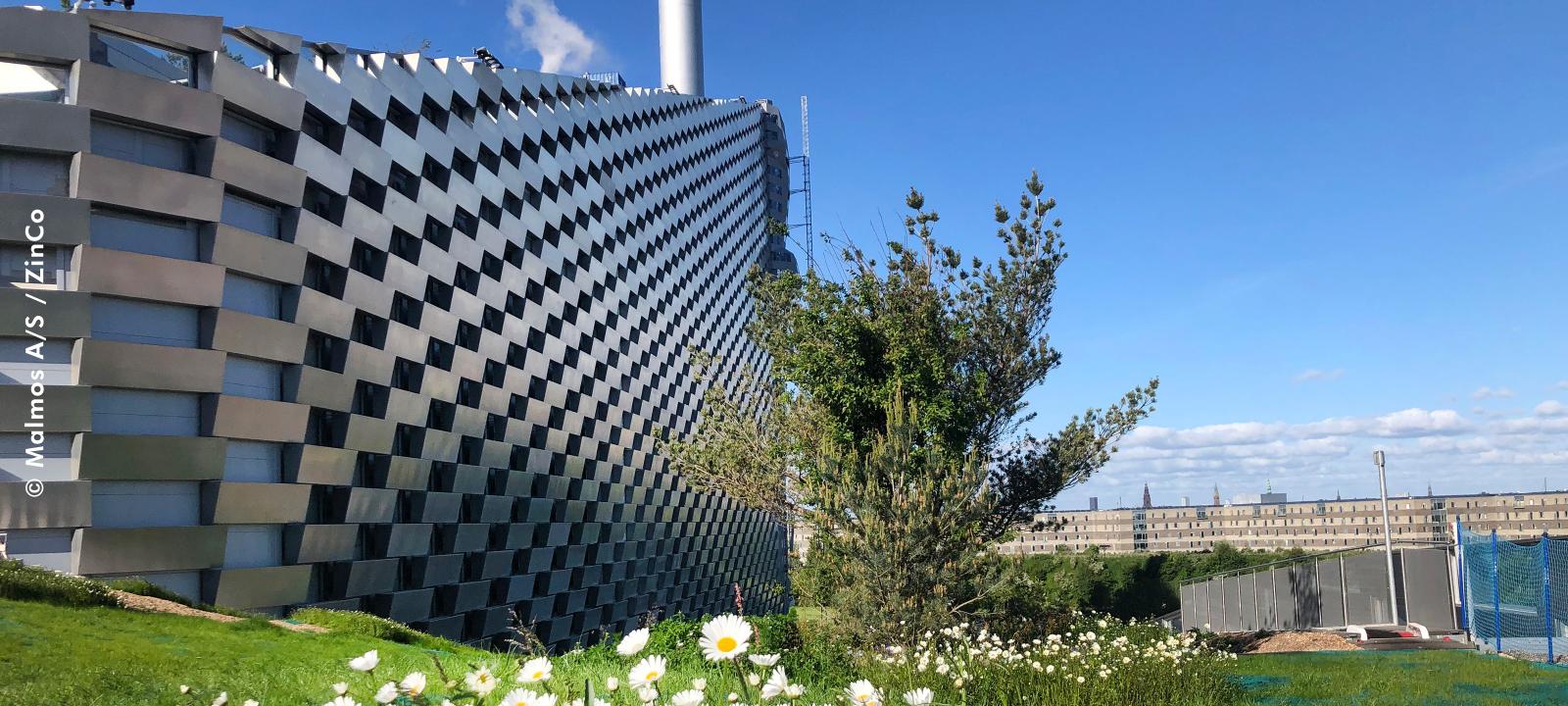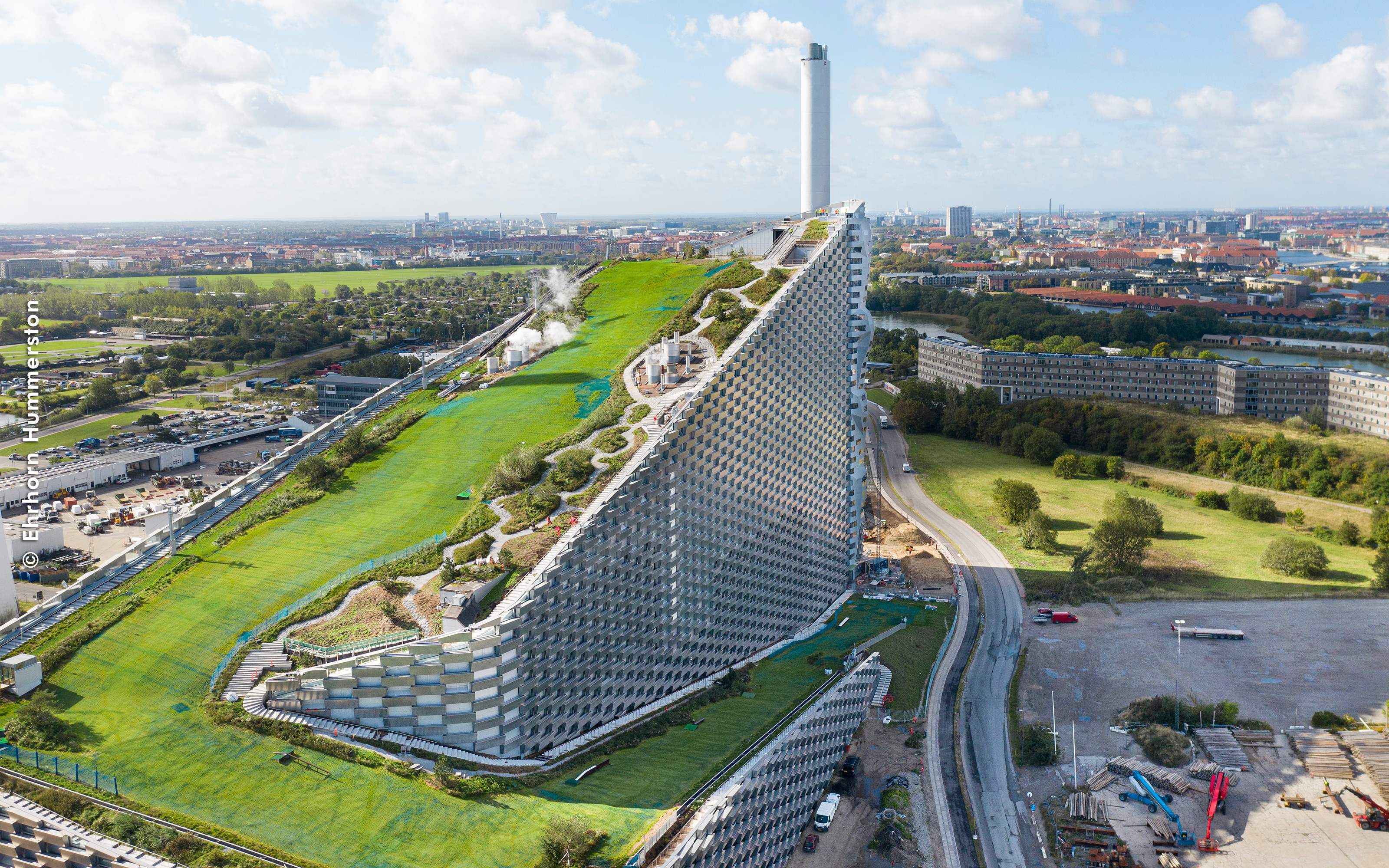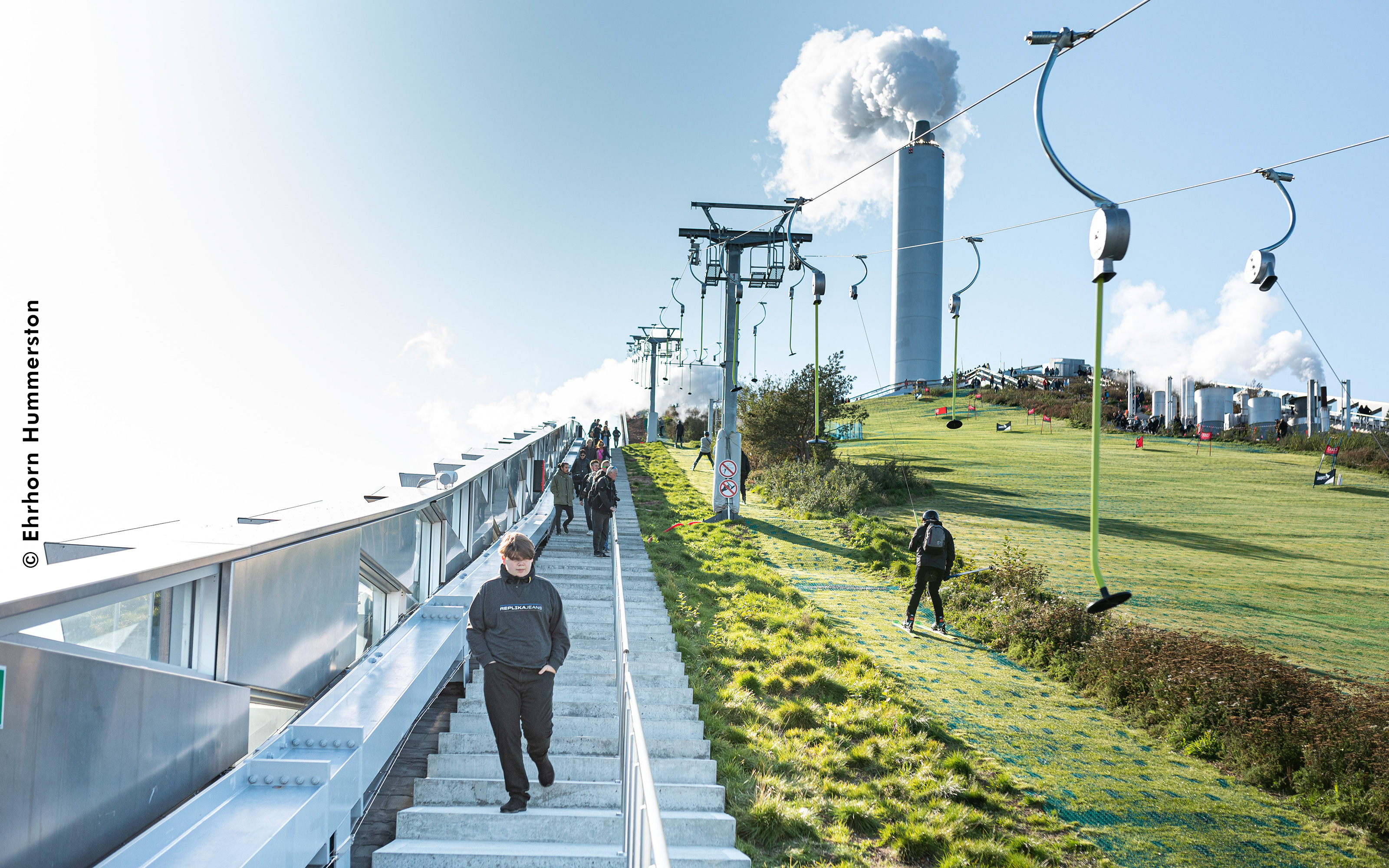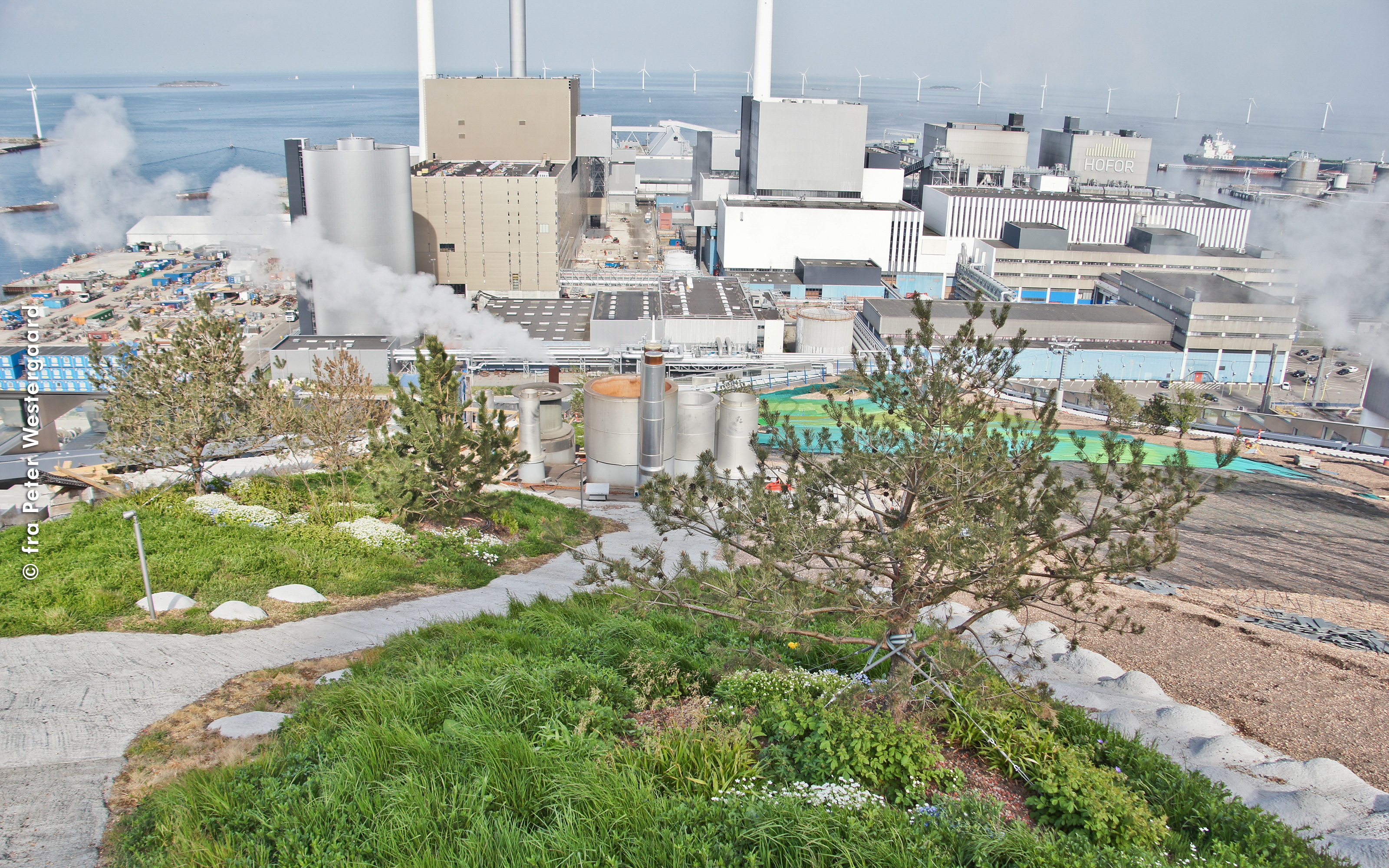Amager Ressource Center, Copenhagen

| project profile data | |
|---|---|
Area: | In total ca. 16,000 m², 3,000 m² of which are pathways, 3,000 m² planted areas and 10,000 m² of ski slope |
Construction year: | 2018/2019 |
Architect: | BIG, Copenhagen |
Landscape architect: | SLA, Copenhagen |
Contractor: | Malmos A/S, Roskilde |
System build-up: | Special solutions with Elastodrain® EL 202 and Protectodrain® PD 250 |
In October 2019 Copenhagen gained a new attraction: A ski slope in the town! While the waste incineration plant "Amager Ressource Center" provides electricity for 30,000 and heating for 72,000 households, the roof of the building accommodates a 450 m vegetated long ski slope. It is not snow visitors are skiing on, but green synthetic mats and real grass growing through the mats. 4 lifts bring visitors comfortably to a height of 87 m, where they can enjoy a panoramic view of Copenhagen. Alternatively one can take a pathway surrounded by lush greenery along the slope. The slope flattens towards the bottom, so that even beginners can approach the sport at the foot of the building. In order to stabilize the system build-up and prevent sliding numerous shear barriers were anchored in the concrete roof structure. At the same time they divert exceeding water towards the edges of the roof. The root balls of the trees, weighing up to 2.5 tons, were supported by specially shaped meshes. The substrate is embedded between two layers of geogrids, connected by nearly half a million of cable binders. The operator of “Copenhill”, as the plant is also called, is expecting about 300,000 visitors a year.


